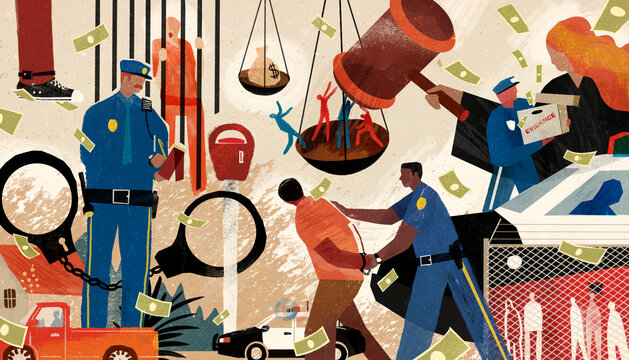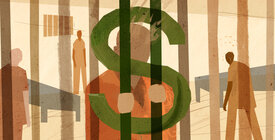
In the Criminal Justice System, Don’t Sacrifice Public Safety for Profit
Financial motivations — and their budgetary effects — have become persistent and self-reinforcing. Nevertheless, we can rebalance the scales of justice, and we must.

Part of
This article first appeared in USA Today.
While the nation’s imprisoned population has declined since peaking in 2009, incarceration levels still remain extraordinarily high.
Continued efforts to lower incarceration rates will stall unless we address the role that revenue plays in the daily operation of police departments, courts, jails and prisons across the country. So much of these entities’ time and effort goes into generating revenue that the goals of pursuing justice and improving public safety often get pushed to the side.
A new Brennan Center for Justice report delves into the interlocking economic incentives that underpin our justice system. Many of these practices rely on a simple calculus: More people in the justice system means more dollars for agencies, governments and contracted for-profit firms
Some of the revenue streams flow straight out of the pockets of the people who are ticketed, searched, arrested, jailed, tried and sent to jail or prison, while others arise from a growing trade in bed space at correctional and detention facilities.
More from the How Perverse Financial Incentives Warp the Criminal Justice System series
-
A Market for Holding Humans: The Correctional and Detention Bed Trade
Excessive incarceration and immigration detention has resulted in a perverse system where people in custody are shuttled among facilities around the country for money. -
Outlawing Police Quotas
Police quotas don’t make communities safer — they prevent officers from focusing on larger public safety issues. -
How Electronic Monitoring Incentivizes Prolonged Punishment
An innovative method to help reduce mass incarceration is often derailed by outrageous fees and onerous rules that can send people back to prison.





